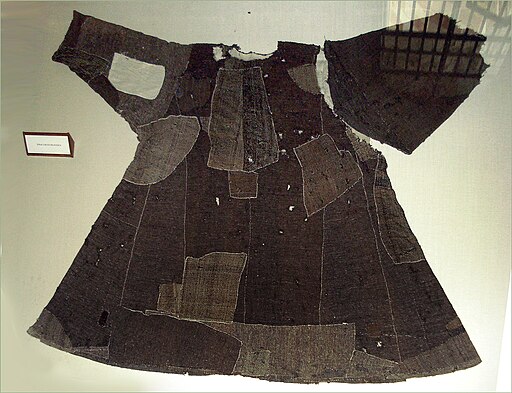“An inconvenience is an adventure, wrongly considered.”
G.K. Chesterton
How to Avoid Taxes
Not that I am suggesting anyone fail to pay their lawful taxes – look where it got Al Capone, for a start. Instead, I turn to the time-honoured practice of the cash-free economy, as a convenient way of reducing or minimizing tax incurred.
A wise and talented friend of mine suggested some time ago that we could swap skills to mutual benefit. I knit, she doesn’t; she is a professional artist and I can’t even conjure the artistic verisimilitude of a stick-man.
So, I am going to knit her a warm wooly winter hat and scarf (patterns selected from Ravelry, the only online social network to which I belong) and she is going to draw a portrait of me (which I plan in due course shall grace the About page).
Let us hope, for the sake of the sighted public, that her kindness as a friend outweighs her accuracy as an artist…

There are a lot of benefits to entering the cash-free economy.
For example, the lack of tax. Yes, tax is still payable on the materials, but the labour is untaxed, as is the final product.
Consider: How many hours at the DDJ would it take to earn the money to pay for a portrait? More than I care to think of, particularly considering that the government would insist on taking a nice fat slice of tax off the top. Shudder.
So much more pleasant to knit instead, which is a) something I enjoy, b) something I find relaxing and c) something I can do while either watching a DVD or listening to my husband read – it doesn’t get much better than that!
There’s also the social aspect – particularly important for those of us who work at home. I spent a very enjoyable morning with my friend going through patterns and then selecting yarns and needles. As Marianne asks, “is there a felicity in the world superior to this?”
What skills do you have that others might have need of? Conversely, what skills are you in need of? Cash can be a convenient arrangement when there isn’t a directly reciprocal need, but why go via cash (and be taxed) when you don’t have to? It’s worth asking around – most people are happy to be offered a chance of legal tax avoidance.
Barter, cashless economy, payment in kind, quid pro quo – call it what you will, it’s a great old idea. Now if you’ll excuse me, I’m going to put my feet up, have a cup of tea and knit.
Synchronicity Always Strikes the Same Place Thrice
If, as Holbrook Jackson maintains, your library is your portrait, then surely your public library loans are your latest snapshot.
My list of current loans reflects my recent fascinations with tea (social, cultural, historical, comestible), simplicity, Jane Austen’s times (tea and crime) and Victorian-era New Zealand (mostly crime). I also have books on undertaking and rhetoric, which simply caught my eye as I browsed.
I expected to see wabi-sabi mentioned in the book on the Japanese tea ceremony and it seemed natural to encounter it in one of the books on simplicity. But when it popped up for the third time in the book about modern Canadian undertaking, I was surprised.
My favourite of the three encounters is the essay ‘Wabi-Sabi Time’ by Robyn Griggs Lawrence; in the book Less is More, edited by Cecile Andrews and Wanda Urbanska.
Wabi being notoriously hard to define, she gives a variety of descriptions, including “a little monk in his torn robe, enjoying a night by the fire – content in poverty.”
Sabi is a bit easier to define: it refers to the effect of the passing of time (literally: rust).
Together, the words wabi-sabi conjure a sense of imperfect beauty, tarnished with time, but valued all the more for its age and imperfections.
“Wabibitos live modestly, satisfied with things as they are. They own only what’s necessary for its utility or beauty (ideally, both). They revere humans over machines, surrounding themselves with things that resonate with the spirit of their makers. Wabi-sabi is imperfect: a beloved chipped vase or a scarred wooden table… It’s like going to Grandma’s house.
“Our Depression-era grandmothers knew wabi-sabi. And their houses were so comfortable because they understood, inherently, the difference between wabi [or possibly sabi -DM] and sloppy. Their tablecloths and linens were faded, but they never had rips or tears. Their furnishings had a settled-in quality, but they weren’t dilapidated. Their floors showed wear, but they were always swept, with rag-rugs that wove together memories in their use of old garments.” (Less is More p.160).
I don’t know about you, but that strikes me as a pretty good way to live. Banish perfection, or the illusion of perfection for which we strive; banish the cheap (or expensive) tat which is heading for planned obsolescence, or never had a purpose to begin with. Have little, but take joy in the little you have.
Beauty. Simplicity. Usefulness. Mmm.
Have you been surprised by synchronicity lately? What’s your take on wabi-sabi, or similar concepts? And what do your library books say about you?





